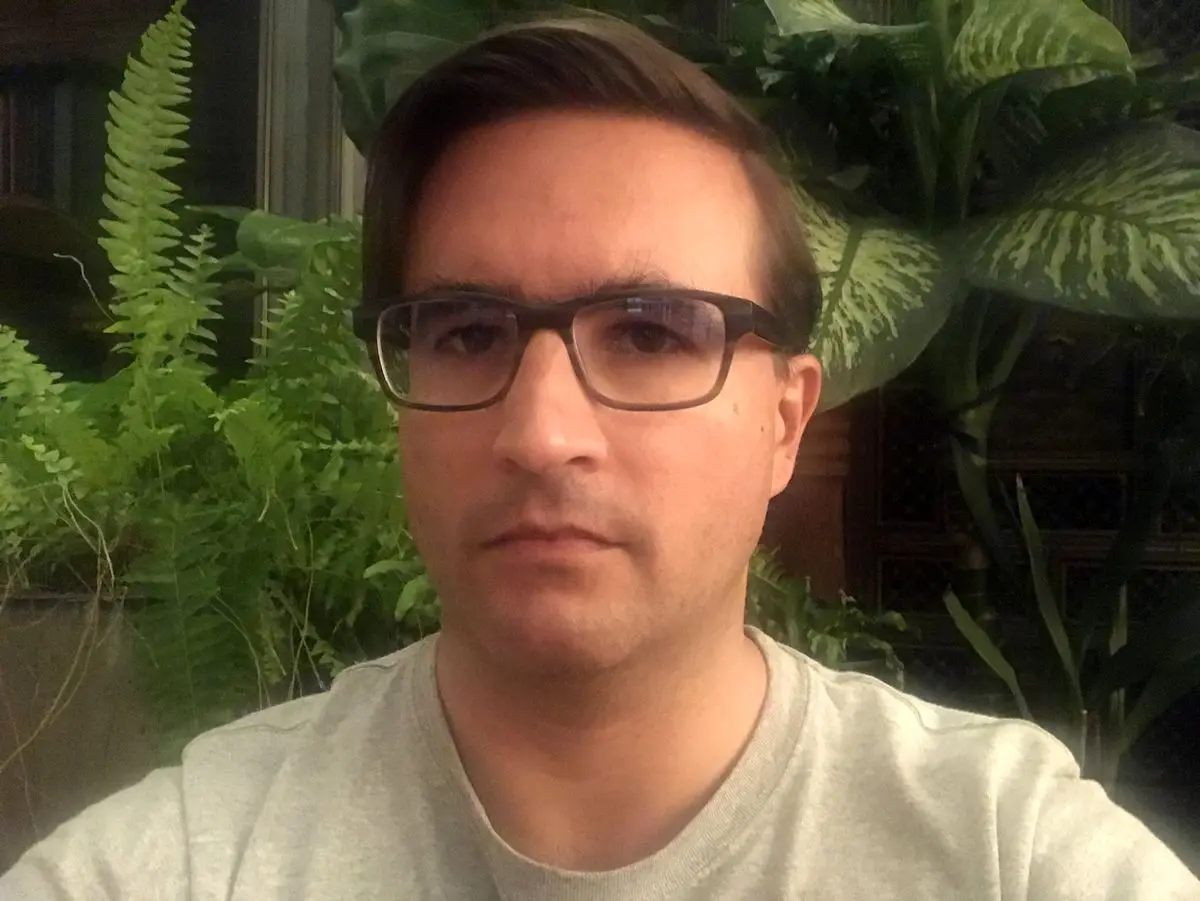Immense reach of US power has clearly contributed to “terrorism”; Geoff Shullenberger tells ILNA

It strikes me that in the period after 9/11 (and even before) “terrorism” was largely discussed in the US as something foreign, something that comes from outside, and of course one of the important implications of Baudrillard’s argument is that it never truly comes from outside: it is generated by the system itself in the fantasies of its own destruction.
Geoff Shullenberger is a New York City-based academic and writer. He teaches at New York University and blogs at outsidertheory.com. His essays on technology, culture, literature, theory, and education have recently appeared in Arc Digital, the New Atlantis, the Spectator USA, the Bellows, Tablet, and Real Life. Below is IlNA's interview with this authentic intellectual on the anniversary of the September 11 attacks.
ILNA: You once argued that “for reasons that may have relatively little to do with technological developments, relative overall rates of violence have been low in recent decades, but there has been a rise in spectacular violence that has fallen under the blurry categories of ‘mass shootings’ and ‘terrorism.’ ” How do you describe this shift of violence to the category of terrorism? Has this shift changed the theme of violence and terror?
One interesting phenomenon in the US in recent decades is that overall rates of violent crime have been low by historical standards (with the decline beginning in the 90s), but most people seem to perceive we are living in an especially violent period. Obviously, the media is largely to blame for this: it covers acts of violence more enthusiastically than any other news. “Terrorism,” at least the version of it that came into existence in the 60s and 70s, was always partly driven by an awareness of the media’s moth-to-flame attraction to spectacular acts of violence. As a political weapon, it was always premised on using violence to gain the attention of the media. “Mass shootings,” which first became common after the Columbine High School massacre in 1999, had a similar inspiration but removed from any political struggle and outside of any clear ideological orientation. Like terrorists, mass shooters also committed their violent acts for the sake of attracting media attention, but they wanted to attract it to themselves, not to any particular cause.
As is perhaps inevitable, these two categories have lately started to blur, especially during the Trump era. But there’s something of a back story to this development. During the Obama era, the American right was obsessed with the idea that Obama and his supporters would not call violent acts “terrorism.” For example, during a 2012 presidential debate, then-candidate Mitt Romney accused Obama of not referring to the Benghazi attack on the US ambassador as “terrorism.” But now, if you listen to liberals and the left, they do this same thing all the time. For example, they have demanded that Kyle Rittenhouse, who recently killed two people during the protests in Kenosha, Wisconsin, be referred to as a “terrorist.” The right often still does the same, with bizarre results. For example, after the Las Vegas shooting in 2017, where the motives of the shooter remain completely unknown, you had right-wingers claiming he was an “Antifa terrorist” and left-wingers claiming he was a “white supremacist terrorist.” So there’s an impulse on both sides to define terrorism as widely as possible. That’s because, regardless of the motives of the perpetrator, these sorts of acts of violence always get quickly politicized now, and “terrorism” is a way of claiming that the violence is not random, but has a political meaning.
Interestingly, though, it also works the other way. “Terrorists” (perpetrators of violence who are trying to draw attention to a political cause) often behave in exactly the same way as apolitical “mass shooters.” For example, the San Bernardino shooters in 2015 massacred the man’s workplace. This looks like a typical case of “going postal” – killing people in your workplace as a result of stress and frustration, not ideology – except these shooters were allegedly radicalized by ISIS. Dylann Roof, the white supremacist, murdered people in an African American church in South Carolina out of racial hatred; Devin Kelley, a white man, murdered people in a church in Texas, apparently out of personal grievances. What all these have in common is they are media-oriented acts of violence: the perpetrator knows it will dominate a few news cycles. I would guess that news consumers today increasingly classify all of these sorts of acts as “terrorism” because they’re more legible that way: they can be fit into a political narrative.
ILNA: According to Jean Baudrillard, one of the radical aspects of events such as the 9/11 attacks is the death itself- namely, a death that can be met only by equal or greater death. Here the system is challenged by a gift that can only be responded by its own death and collapse. How does this “excess of reality” collapse the system?
As I understand it, Baudrillard’s claim here partly relied on the suicidal nature of the attacks: that the terrorists willingly gave their own lives as well as taking many others was part of what made them incomprehensible and traumatic to the West (same goes, to some extent, for the homegrown mass shooters discussed above). It’s in this sense that these acts are both “symbolic and sacrificial,” as he says. In the background of this idea is the work of Georges Bataille, for whom sacrifice was an expression of excess that generates the sacred – a logic radically opposed to the parsimonious utilitarianism of the modern West. Baudrillard comments that the “zero-death strategy of ‘clean’ technological war” is the military expression of this utilitarianism, which attempts to avoid the sacrificial “wasting” of life at all costs. It is by embracing this “waste” that 9/11 generates its “symbolic and sacrificial” power. The attackers were fighting the West with its own technological tools, but also introduced something radically incommensurate with it: the “lethal weapon” of their own deaths. It collapses the system, then, by introducing the principle it attempts to exclude: the sacrificial “waste” that generates the sacred, according to the account Baudrillard borrows from Bataille.
ILNA: Many believe that the space for the 9/11 attacks had already been prepared in ideological fantasizing, from Hollywood blockbusters to right-wing novels about the U.S downfall. Does this form of fantasization work as a fetish to postpone the inevitable event that the current state of antagonisms in the world will sooner or later lead to an explosion of extremism?
Baudrillard interprets the frequent pre-9/11 Hollywood representation of the destruction of New York City and D.C. as an expression of a fantasy. “They did it, but we wished for it,” he writes. An interesting possible support for this idea: it was recently reported that alleged Al Qaeda operative Abu Zubaydah told his interrogators at Guantánamo that he and his co-conspirators had once planned to attack the Brooklyn Bridge because they had seen Godzilla do it in a movie. If we accept Baudrillard’s reading, we might say that by exposing deep-rooted fantasies, movies served the attackers as a guide to action.
He also argues that the films were an attempt to “exorcize the fantasy with images, drowning out the whole thing with special effects” – so it’s a strategy of postponement that must ultimately fail because “the attraction they exert . . . shows that acting out is never very far away.”
It strikes me that in the period after 9/11 (and even before) “terrorism” was largely discussed in the US as something foreign, something that comes from outside, and of course one of the important implications of Baudrillard’s argument is that it never truly comes from outside: it is generated by the system itself in the fantasies of its own destruction. But now, as I discussed earlier, the term “terrorism” is very often applied to completely domestic acts of violence, which means, for one thing, that perhaps Baudrillard’s message finally got through: we largely see it as a violence internal to the West or to the US, rather than coming from afar.
ILNA: The contemporary world structure is dominated by the triumph of globalized capitalism. On the other hand, we have a strategic weakening of states. Are these sufficient conditions for the emergence of a phenomenon such as terrorism? Is it possible to explain the heterogeneous reality of terrorism?
In terms of the state, it’s interesting to me how much of today’s extreme violence seems to result on one hand from the weakening of states but on the other hand from the US military and intelligence activities abroad. The immense reach of US power has clearly contributed to “terrorism” and related forms of violence. The direct support for bin Laden in Afghanistan is the most spectacular example, but there are many others. One that I find interesting: members of the cartel gangs in Mexico and Central America, known for their spectacular terroristic violence, originally learned how to torture and commit acts of terror and mass murder from the CIA and the School of the Americas during the US involvement in Latin American Cold War conflicts in the 1970s-80s.
Other factors I would emphasize are (as discussed above) the mass media, and more recently, social media. Terrorism functions via the media spectacle, and more recently, it’s reliant on social media for organizing, propagandizing, and spreading panic, outrage, and so on. Related to this, terrorism, as it exists today, is notable for its increasing lack of coordination and reliance on so-called “lone wolf” actions. This relates back to the point about the vanishing difference between what used to be called “mass shooters” and “terrorists.” In the case of 9/11, there was a complex global coordination. The internet, even though it is a coordinating tool, has also reduced the need for coordination, because the goal can simply be to inspire individuals to carry out attacks on their own. It seems as though the model of the American mass shooter has been an influence on ISIS and other groups lately.
I also think the general alienation, social isolation, and declining prospects of young people, especially young men, around the world have to be considered, especially in the age of social media. There are various sorts of political radicalization, in different parts of the world, that appeal to disaffected young people via online platforms and provide a sense of belonging. In some cases, their association with these groups leads them to commit acts of violence.
ILNA: The 9/11 attacks were considered to be the death of liberalism as a political doctrine and the 2008 financial collapse was supposed to be its downfall as an economic theory. However, we are witnessing somewhat new forms of terrorism (ISIS for instance) that are spreading all over the world, even in the heart of Europe. Why did the symbolic death of liberalism not lead to the disappearance of various forms of extremism?
I’d say in part because there’s been a loss of faith in liberalism but no new consensus has emerged, ideological conflict has become much more fraught because different groups are trying to seize a moment of opportunity. On the other hand, the institutions (both national and international) of liberalism still remain far stronger than any of their challengers, which means that they still have enough power to frustrate any attempt to challenge them. The general result is a sense of directionlessness and confusion punctuated by periodic crisis (COVID19 being the latest). This is a mood, I think, in which some people are going to be drawn to different forms of extremism that offer some kind of guiding narrative, sense of meaning, and perhaps community. And despite the failure of this to happen in the past, there’s also a belief that some spectacular, symbolic event will finally bring salvation – and while there are benign versions of that, terrorism also appeals to that impulse.
Interview by: Kamran Baradaran
